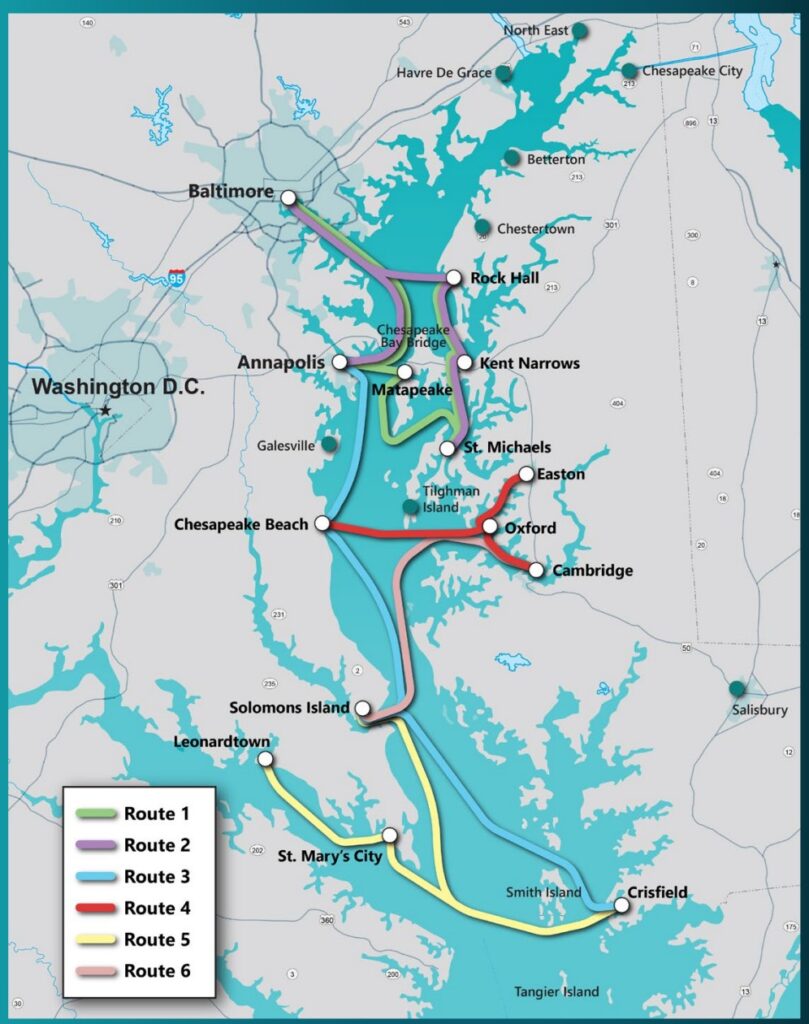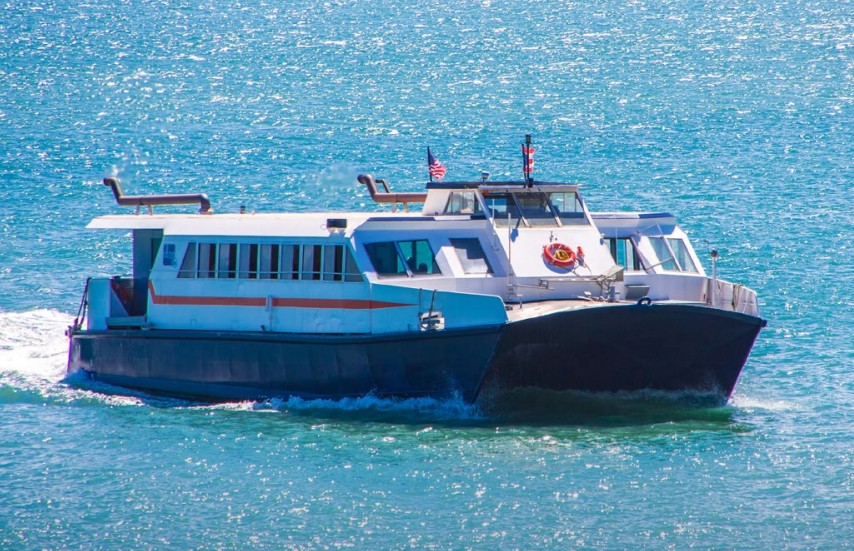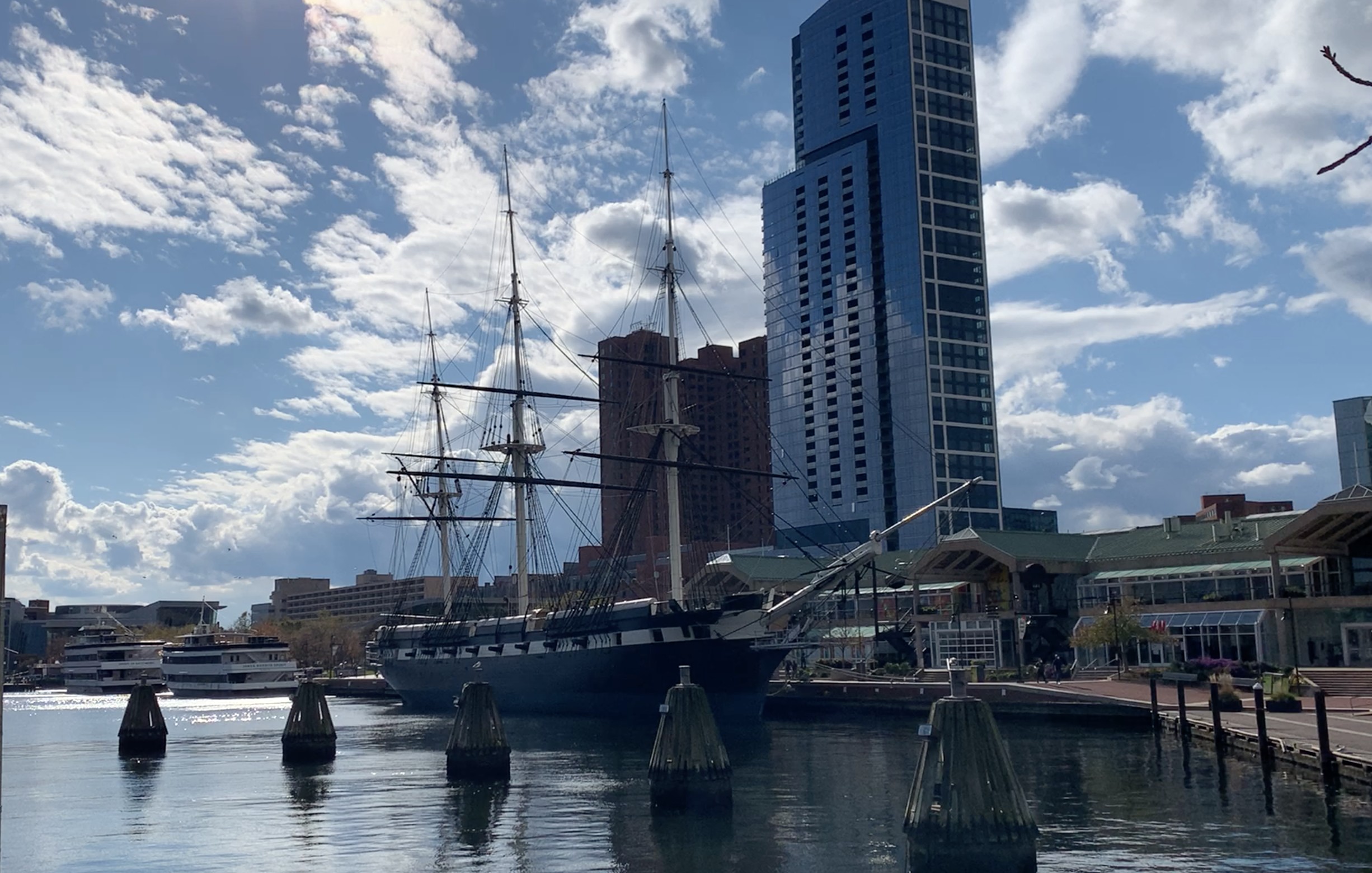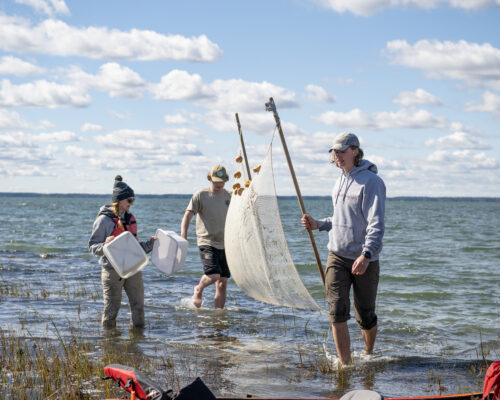Talk of a passenger ferry system running between towns in the Maryland section of the Chesapeake Bay has been gaining momentum. A group of five counties has just completed a year-long study looking at the feasibility of a ferry system for recreational passengers.
The result? A “promising opportunity” to improve transportation and grow the economy across 21 coastal communities in Maryland. The Chesapeake Bay Passenger Ferry Consortium includes the western shore counties of Anne Arundel (in which Annapolis has been a leading voice in calls for a ferry system), Calvert, and St. Mary’s, along with the Eastern Shore counties of Queen Anne’s and Somerset.
The coalition of counties presented the study’s findings at the annual Maryland Association of Counties (MACo) Conference in Ocean City. The study, conducted by Cambridge Systematics, Inc., finds that the proposed system has the potential to create jobs and boost tourism revenue. Study authors say there was significant support for the project from communities for a regional ferry system. Sixty-seven percent expressed interest in the ferry service and 62 percent of community partners were interested in being part of activities for visitors and residents.
The Baseline Passenger Ferry System would include an initial 14 communities that are expected to be most successful within one to three years, while also ensuring geographic diversity, the study’s authors say. The map below identifies the six key routes that would serve the 14 communities:

Route 1: Baltimore, Annapolis, Matapeake (Kent Island), St. Michaels, Kent Narrows, Rock Hall
Route 2: Annapolis, Baltimore, Rock Hall, Kent Narrows, St. Michaels
Route 3: Annapolis, Chesapeake Beach, Solomons Island, Crisfield
Route 4: Easton, Cambridge, Oxford, Chesapeake Beach
Route 5: Solomons Island, St. Mary’s City, Leonardtown, Crisfield
Route 6: Solomons Island, Cambridge
The study looks at recreational ridership, not commuters. It estimates a total ridership forecast of 291,488 per year, with the heaviest use on Routes 1 and 2. On some of the southern routes, a smaller, 49-passenger ferry would be used, with twice-daily service for more flexibility. These routes would save passengers the most time versus traveling by car. Several routes could save ferry riders more than an hour of travel time.
The proposed ferry system puts a notable emphasis on the more rural communities, like Somerset County, where the town of Crisfield can be hard to get to when traveling by car.
“The potential realization of this ambitious project could have a significant economic impact for Somerset and the entire region,” Somerset County Commissioners President Charles Laird said in a statement.
What would the ferries look like in practice? The study identifies two proposed vessels, 149-passenger and 49-passenger catamarans. They should be capable of cruising at 25 knots, whether powered by diesel or a diesel electric hybrid engine. They may or may not be foil-assisted.

Of course, each ferry landing site would need ramps, a terminal building, restrooms and local transit including walking paths, parking lots and crosswalks.
Annapolis is identified as the hub of the ferry system, and has the potential of a fully-staffed terminal building costing an estimated $1.5 million with necessary parking. Solomons Island, Leonardtown and/or Crisfield could serve as southern hubs.
The Ferry Consortium says a key goal of the system is to make it expandable. Another seven destinations in Maryland were identified to be potentially added after the Baseline system is in place. The possibilities include North East, Havre de Grace, Chesapeake City and Betterton on the upper Chesapeake Bay, Galesville in Southern Anne Arundel County, and Tilghman Island and Salisbury on the Eastern Shore.
While the ferry system is currently proposed for just the Maryland section of the Bay, the consortium also says there is potential for the Bay beyond the state of Maryland. “There will be numerous opportunities to identify routes that connect our Maryland communities with locations in Virginia (via the Chesapeake and Potomac), Washington, D.C. (via the Potomac), and Delaware (via the Chesapeake & Delaware Canal).
“The Chesapeake Bay Passenger Ferry Feasibility Study and the Chesapeake Bay Passenger Ferry Consortium showcase the transformative potential of our region,” said Kristen Pironis, executive director of Visit Annapolis & Anne Arundel County. “Five counties across the state joined forces to work on this effort. As we explore next steps, this opportunity can expand to include partners across the Bay. We are optimistic about the study results and the path forward, which could better connect our Chesapeake Bay destinations and create economic impact across the entire state.”
So what’s the next step? The consortium must conduct “readiness assessments” in all 14 of the Baseline communities and identify partners to champion each community. A ferry operator must be identified to run the system. And a financial plan must be made. The study estimates the ferry Baseline System will cost $5 million in expenses during its first year of operation, plus $4.8 million in station improvement costs to support the initial operation.




